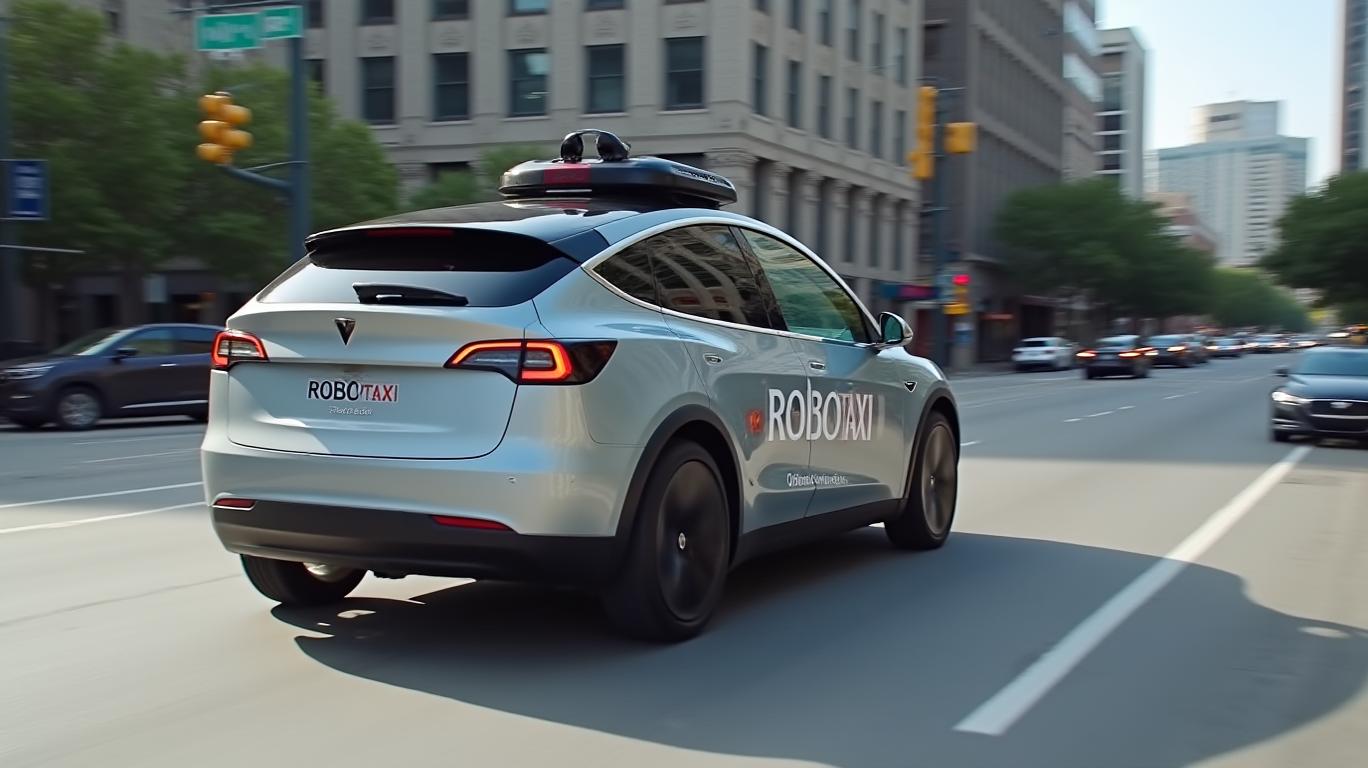Tesla's Robotaxi Launch: A Quantum Leap for Valuation or Regulatory Quagmire?
Tesla's June 12 debut of its robotaxi service in Austin marks a pivotal moment for the automaker's vision of a driverless future. This move could redefine Tesla's valuation trajectory and solidify its position as a leader in autonomous technology—or it could expose the company to regulatory and safety pitfalls that derail its ambitions. Here's why investors must pay close attention.

Strategic Masterstroke: Scale, Speed, and Existing Infrastructure
Tesla's robotaxi rollout is a bold play to leverage its existing fleet of FSD-equipped vehicles, a critical advantage over rivals like Waymo. Unlike Waymo, which has spent decades building a dedicated autonomous fleet, Tesla's vision hinges on repurposing its 1.8 million cars already on the road with Full-Self Driving (FSD) software. This asset-light approach could slash capital expenditures while accelerating market penetration.
The initial Austin launch, starting with 10 Model Y vehicles and scaling to thousands within months, is a calculated risk. Texas's lax regulatory environment—where autonomous vehicles need only comply with standard traffic laws—allows
to bypass the bureaucratic hurdles stifling competitors in California or New York. This geographic arbitrage buys Tesla time to refine its FSD Unsupervised system and build a defensible moat.
Tesla's stock has already priced in much of this ambition, but the robotaxi's success could unlock a $200+ billion revenue opportunity by 2030 if the service scales as planned.
Competing with Waymo: A Battle of Ecosystems
Waymo, with its 250,000 weekly rides in Austin alone, holds a lead in operational maturity. Yet Tesla's edge lies in its end-to-end ecosystem: the FSD software stack, over-the-air updates, and a direct-to-consumer sales model. Waymo's reliance on partnerships (e.g., with Jaguar and Chrysler) creates friction, while Tesla can iterate its autonomous systems in real time using data from its global fleet.
The teleoperation system, where remote operators handle edge cases, is a stopgap but strategically sound. It mirrors how Tesla's FSD has evolved—starting with cautious beta testing before full deployment. This “learn-as-you-go” model could prove more agile than Waymo's sensor-heavy, pre-mapped approach, especially as Tesla's Vision-Only FSD reduces costs.
Valuation: A $1 Trillion Catalyst or a $200 Billion Detour?
If the Austin launch succeeds, Tesla's valuation could soar. Robotaxis promise a recurring revenue stream (estimated $500+ per car annually) and a pathway to capture 10% of the $1.5 trillion mobility market by 2030. The FSD subscription, currently at $22,000 per car over five years, becomes a cash cow when applied to a fleet of autonomous vehicles.
But the risks are existential. Regulatory pushback looms large. Austin's task force has yet to formally approve Tesla as an autonomous operator, and the NHTSA's scrutiny over FSD's safety record—including its role in fatal crashes—could delay expansion. Meanwhile, manual charging (due to unimplemented wireless systems) and unresolved regional regulations (e.g., emergency call protocols) add operational friction.
Tesla's FSD adoption (now at 40% of new cars) is a positive sign, but Waymo's head start in commercial operations cannot be ignored.
The Bottom Line: A High-Reward, High-Risk Gamble
Tesla's robotaxi launch is a binary bet. Success here could catalyze a valuation surge, as investors price in a future where Tesla isn't just a carmaker but a transportation-as-a-service giant. Failure, however, risks regulatory fines, reputational damage, and investor skepticism.
For investors, the calculus is clear: act now or miss the next leg up. Tesla's stock has already risen 30% this year on optimism around FSD and robotaxis. The June 12 launch is the proving ground.
The stakes are too high to ignore. This is Tesla's moonshot—and the market's next inflection point.
Final Note: Monitor regulatory approvals in Austin and FSD Unsupervised performance post-launch. A smooth rollout could spark a Tesla rally; delays may trigger a correction.

Comments
No comments yet